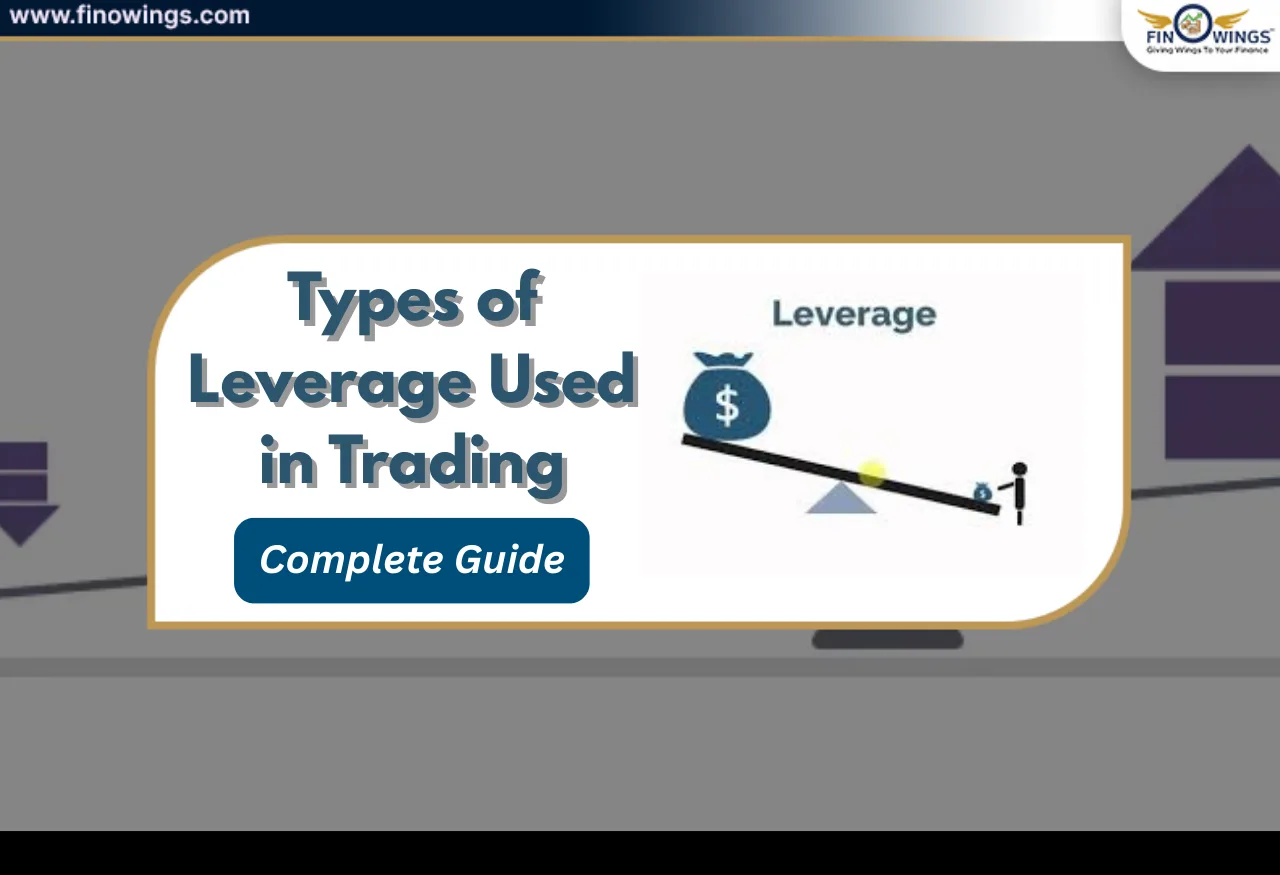Home >> Blog >> What is Money Flow Index: How to Use & Calculate it
What is Money Flow Index: How to Use & Calculate it

Table of Contents
Introduction
Do you realize the significance of looking at volume signals such as the Money Flow Index? Yes! A volume-weighted relative strength statistic called the "Money Flow Index" evaluates volume and price to determine whether something is being bought or sold.
Don't be perplexed! The only distinction between this indicator and the Relative Strength Index is that it includes volume in addition to price in its computation. The Relative Strength Index and the Money Flow Index are calculated using the same Money Flow Index formula.
We'll explain this indicator's purpose and trading strategies in today's post to put your doubts to rest. Without wasting any time, let's start with this indicator's fundamentals:
1. What is the Money Flow Index?
A movement indicator called the Money Flow Index (MFI) evaluates time and price to determine if there is more demand to purchase or sell. It is also known as the volume-weighted Relative Strength Index (RSI) since similar to RSI, it takes volume into account in addition to the price.
A rise in the typical cost signals positive money flow and purchasing pressure, while a decline in the typical cost signals negative money flow and selling pressure. A money flow ratio, also known as a money ratio, is produced by adding up these positive and negative money flows.
The money ratio can identify the MFI that oscillates between 0 and 100. In addition, the MFI can be utilized to identify cost extremes and reversals with various indicators because it combines volume.
POINTS TO NOTE
-
Using price and volume information, the Money Flow Index (MFI), a technical indicator, alerts whether a security is overbought or oversold.
-
While values of 90 and 10 are employed as thresholds, an MFI reading above 80 is regarded as overbought. An MFI reading below 20 is regarded as oversold.
-
It is noticeable when the indication and price diverge. For instance, if the indication is increasing while the price is decreasing or unchanged, the price may begin to increase.
2. Money Flow Index Calculation
Several calculations are needed for the Money Flow Index.
-
First, we must get the period's average price, equal to (high + low + close)/3.
-
The period's typical cost is multiplied by the volume to determine the money flow. Money Flow is equal to Average Cost * Volume. It must be noted that Positive Money Flow is regarded as occurring when today's typical cost is higher than yesterday's regular cost. Therefore, it is deemed a Negative Money Flow if the current price is lower. The total of the positive money over the defined number of times is the positive money flow. In contrast, the total of the negative money over the given number of times is the negative money flow.
-
Next, the Positive Money Flow is divided by the Negative Money Flow to determine the Money Ratio. The money Ratio is then determined by dividing positive and negative money flows.
-
The Money Ratio, which = 100 - [100 / (1 + Money Ratio)], is used to generate the Money Flow Index.
Now that we are aware of how the Money Flow Index is calculated, let's talk about how to use this indicator in trading to produce trend reversal signals:
3. Trading through MFI
Several trades are using the Money Flow Index strategy, including the following:
3.1 Overbought and Oversold zones
If the MFI indicator reveals a sharp price increase to a high level, the stock is said to be overbought. The overbought zone is where costs have increased significantly and are now weary of moving further forward; hence, the prices may shortly turn to a downtrend.
According to this, the stock is deemed oversold if the MFI shows a sharp drop in price to a deficient level. The oversold zone is where prices have dropped significantly and are now weary of dropping further; hence, costs may shortly return to the uptrend.
Using the oversold and overbought levels, you may spot price excesses. For example, MFI often indicates an overbought state when it is above 80 and an oversold situation below 20. Although the upward trend is robust, costs may keep rising, and the MFI may soar above 80.
However, if MFI declines below 20, prices may keep falling in the face of a severe downward trend.
We can see how the stock, after hitting the oversold area, reverses to an uptrend and reaches the overbought area inside the daily data of Tata Motors Ltd. below:
A state is deemed overbought if the MFI rises beyond 90 and oversold if the MFI falls below 10. The MFI is rarely greater than 90 or lower than 10, indicating that a price fluctuation is not sustained.
3.2 Divergences
The second method of using this signal in trading is to look for divergences among price and Money Flow Index:
a. Bullish Money Flow Index (MFI) divergence
Whenever the cost makes a new low while the MFI makes a higher low, indicating increased money flow, this is known as a bullish divergence. It suggests buyers will soon take control of the marketplace as selling pressure lessens. Additionally, it offers the chance to purchase shares for less money. The USD/INR daily chart shows a bullish divergence, leading to a cost rise and several excellent buying chances.
b. Bearish Money Flow Index (MFI) divergence
Whenever the cost moves to a new high but the MFI shows a lower high, this is known as a bearish divergence. It suggests that the marketplace will begin to favour sellers once there is less buying pressure. It presents a chance for vendors to benefit. Tata Motors' daily data shows a bearish divergence, which led to a decline in cost and some excellent selling chances.
3.3 Failure Swings
Failure swings can also signal a price reversal, just as divergences. However, it must be noted that failure swings rely partially on cost and MFI. Both bullish and bearish failed swings follow the same four steps:
a. Bullish MFI failure swing
-
MFI falls below 20. (oversold)
-
MFI bounces back and surpasses 20.
-
MFI falls but remains above 20.
-
MFI surpasses the previous high.
b. Bearish MFI failure swing
-
Over 80, MFI rises (overbought)
-
MFI falls under 80
-
MFI marginally rises but remains around 80.
-
MFI declines to its previous low.
4. Strategies of the Money Flow Index
MFI is a complete overall indicator; however, it works best with other technical indicators tools. In addition, MFI is primarily a leading indicator because it is a volume-weighted signal. Therefore, combining it with another indication that will act as a verification tool for MFI indications is crucial because it provides early indications.
Other momentum-based oscillators like Stochastics can validate overbought and oversold MFI indications when trading range markets. Like MFI, Stochastics likewise uses 20 and 80 markers for oversold and overbought levels. When MFI and Stochastics produce identical indications in range markets, there is a high probability of buying and selling trading indicators.
5. Limitations of the Money Flow Index
The MFI has the same potential to generate erroneous indications as other technical signals. A loss transaction is an outcome whenever the movement predicts a profitable trading possibility, but the price doesn't move as predicted. So, for example, a divergence might not cause a change in cost.
It must be noted that the signal might not always provide a crucial warning. For instance, not all price reversals will exhibit divergence. As a result, it is advised that traders not rely exclusively on this signal and instead use additional technical analysis tools, indicators, and risk management.
Conclusion
As mentioned previously, MFI is a valuable indicator for examining price and volume. However, as was once said, it also has limits; thus, this indication should be used with other technical analyses. We sincerely hope that you found this post to be educational and that you will make the best use of the material in the real world. By sharing the word about this site with your loved ones, you can support us in our goal of promoting financial literacy.
Author
Frequently Asked Questions
Money flow into and out of an investment over a predetermined period is measured by the Money Flow Index (MFI), a momentum signal. It is similar to the Relative Strength Index (RSI), but it also takes volume into account, while the RSI takes cost into account.
A technical signal called the Money Flow Index, or MFI Signal, shows how much money is coming into and going out of an asset over a predetermined period. This advantage is that traders can quickly determine when the demand for an asset rises or falls based on the movement of money. It belongs to the larger class of oscillators and is regarded as both a volume and a momentum indicator. It is comparable to the RSI but differs in that it contains a volume-weighted component.
The MFI Indicator, an oscillator, is employed to spot overbought and oversold market circumstances. Overbought situations are indicated by an MFI rating above 80, and oversold circumstances are indicated by reading below 20. Then, traders can sell or purchase to look for reversals whenever the signal indicates an overbought or oversold situation. Traders can also use the midpoint 50 levels to determine when the marketplace turns from bullish to bearish and vice versa.

















